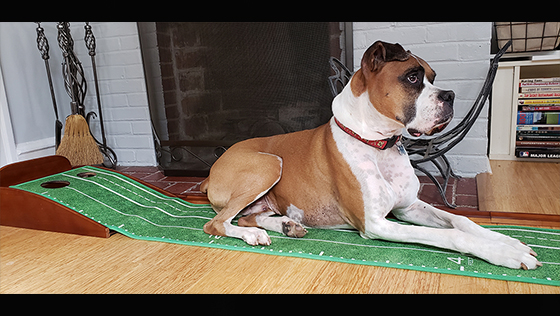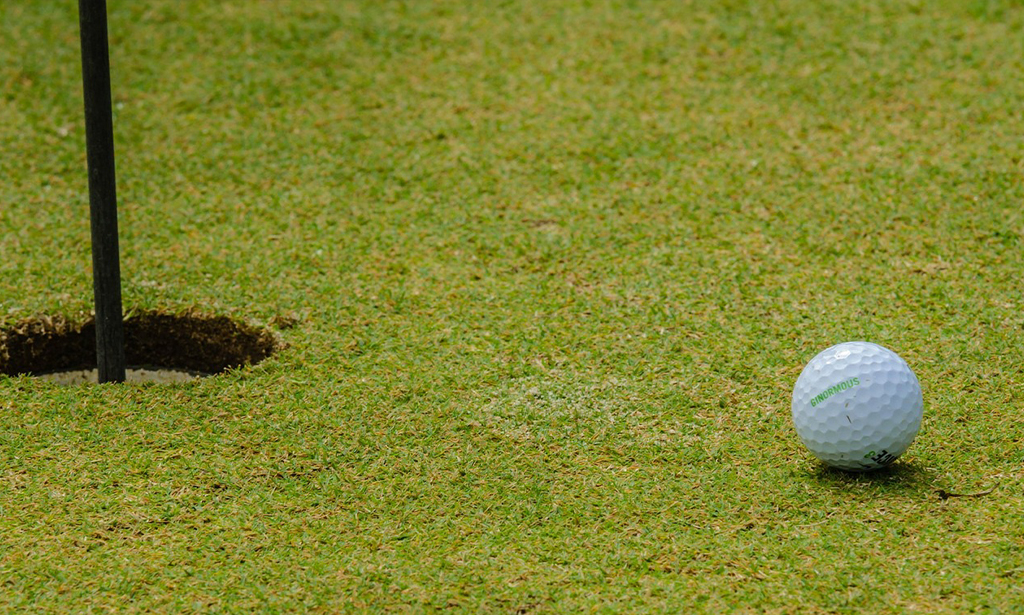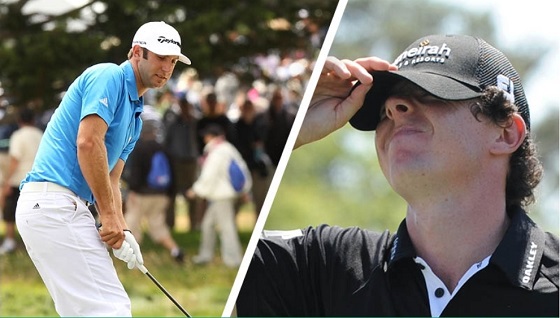Blog
Mental Toughness: Strategies Used by Tour Professionals
Discover the mental toughness strategies that tour professionals use to excel under pressure and learn how to apply these techniques to your own game.

When it comes to golf, the mental game can be just as important as the physical one. In fact, many of the world’s top golfers will tell you that mental toughness is often the deciding factor between winning and losing. As the Resident PGA Pro, I want to share insights into how tour professionals harness mental strength to excel under the immense pressure of competition. Developing mental toughness is something every golfer can work on, and with the right strategies, you can elevate your game to new heights.
The Power of Staying Present
One of the greatest assets tour professionals have is their ability to stay present. The legendary Jack Nicklaus often spoke about how staying in the moment allowed him to focus on each shot as an isolated challenge, rather than worrying about past mistakes or future outcomes. Staying present helps eliminate the distractions that can derail a golfer’s focus, whether that’s a bad previous shot, a looming water hazard, or the pressure of the leaderboard.
To achieve this, many pros use breathing exercises to reset before each shot. Taking a deep breath before stepping up to the ball helps clear the mind, slow the heart rate, and narrow focus. It’s a technique that anyone can use—when you feel nerves creeping in or thoughts beginning to wander, take a breath and bring yourself back to the task at hand.
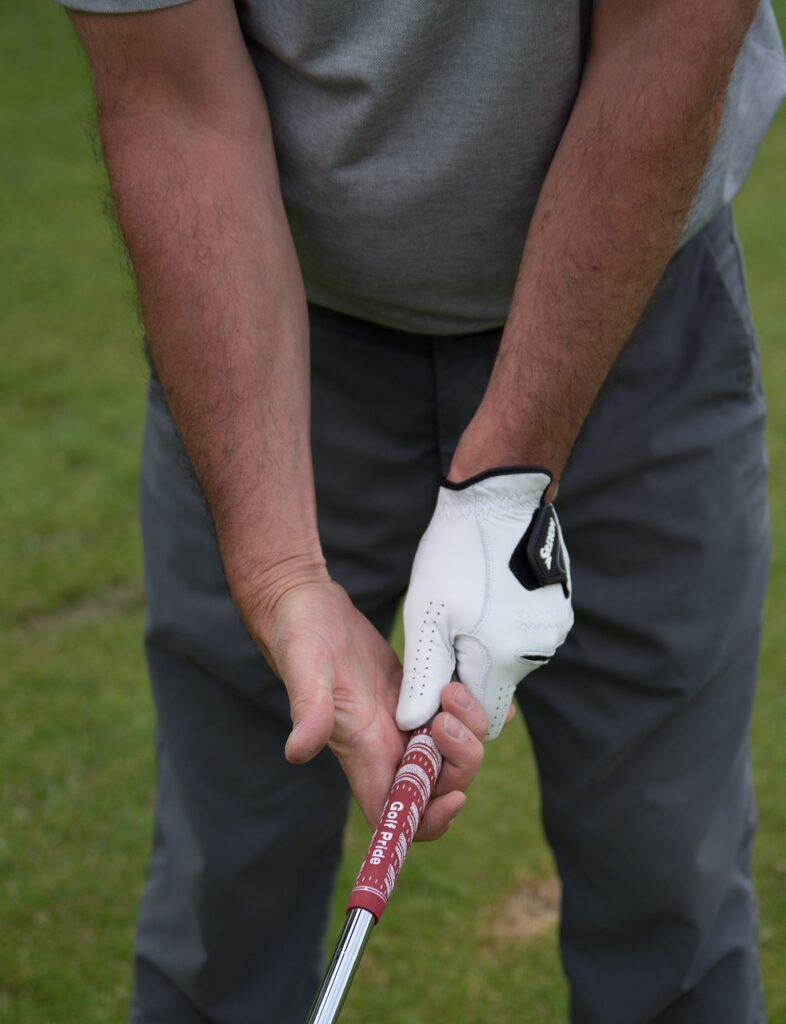
Visualization: Imagining Success
Mental toughness doesn’t mean ignoring fears or doubts—it means managing them. Tour professionals often use visualization as a tool to build confidence and reduce anxiety. Before hitting a shot, they imagine the perfect outcome, visualizing the ball flight, the landing spot, and even the roll on the green. This creates a positive mental image that can override negative thoughts, building the confidence to execute a challenging shot.
Tiger Woods is famous for his pre-shot routines, which always include visualization. He sees each shot in his mind before physically executing it. Visualization isn’t just about the outcome, though; it can also help you prepare for the feelings and sensations of being in pressure situations, making them more familiar and less intimidating when they actually happen.

Turning Pressure Into Opportunity
Tour players face immense pressure, whether they’re competing for a major title or trying to make the cut. Mental toughness means transforming that pressure into an opportunity rather than a burden. Players like Rory McIlroy and Brooks Koepka embrace pressure by reframing it: instead of seeing it as something negative, they see it as a sign that they’re in contention, and therefore something they’ve worked their entire career to feel.
One effective way to reframe pressure is to focus on what you can control: your routine, your breathing, and your preparation. Pros understand that they can’t control external factors like the crowd or what their competitors are doing—but they can control how they respond. This ability to control their response to pressure is what keeps them grounded during tense situations.
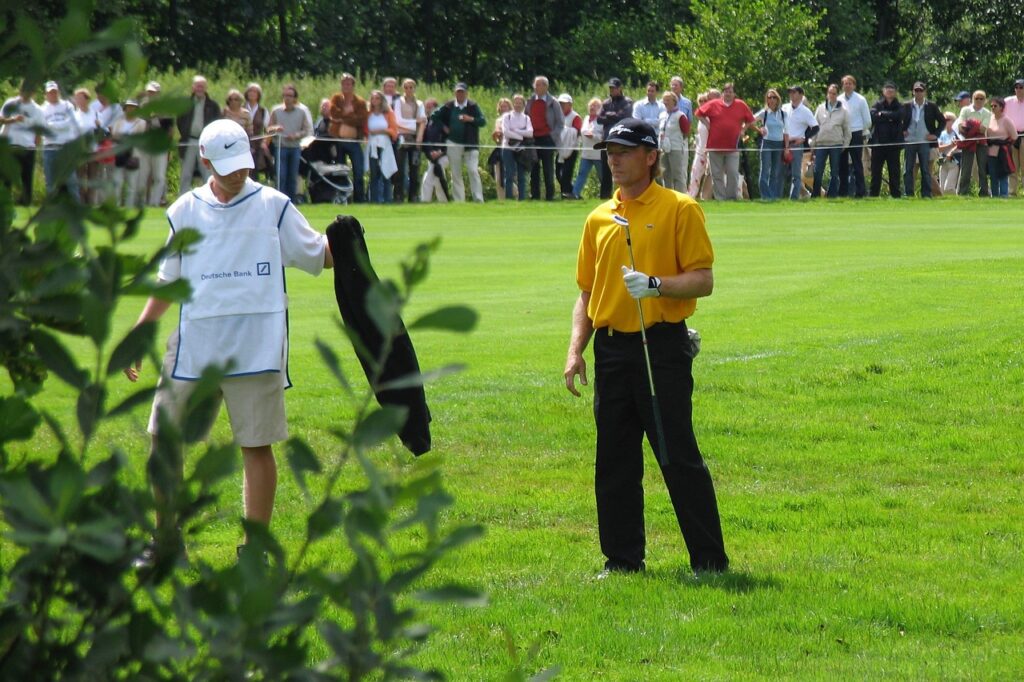
Managing Expectations and Embracing Failure
A key part of mental toughness is managing expectations and accepting that failure is part of the game. Even the best golfers in the world hit bad shots or miss putts. Mental toughness means accepting those moments without letting them impact the rest of the round. Players like Jordan Spieth have shown incredible resilience by bouncing back from disappointing holes and staying competitive.
By treating each round as a learning experience, tour pros are able to separate themselves from the outcome. They don’t define their abilities by a single shot or round, and they avoid letting negative moments snowball into bigger issues. This mindset is something all golfers can adopt—accept mistakes, learn from them, and move on. Dwelling on mistakes only makes it more difficult to perform well on the next shot.
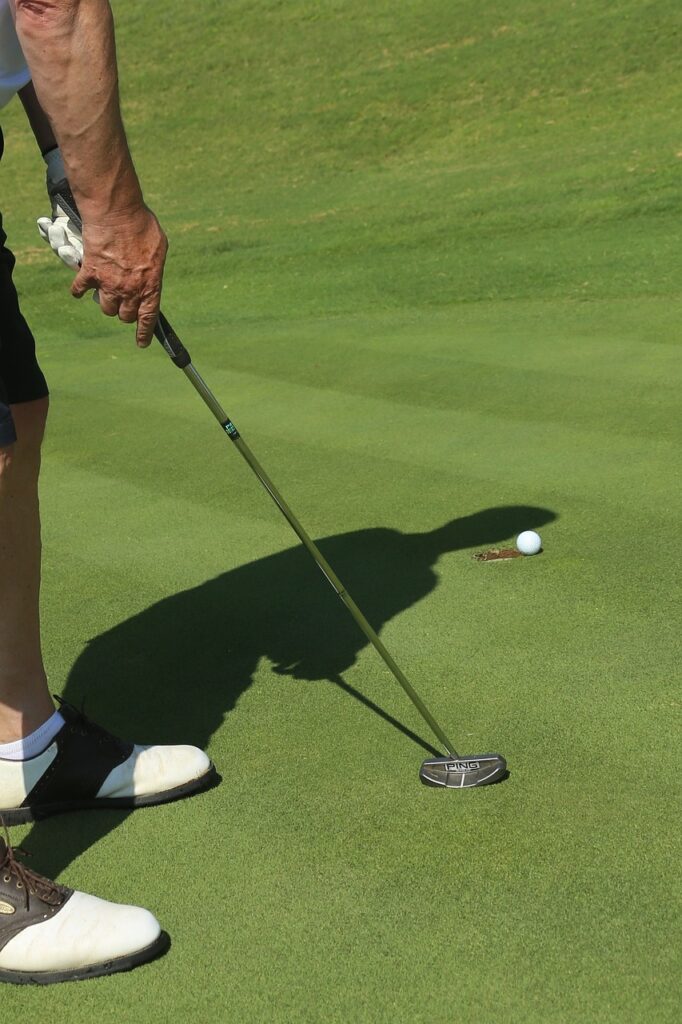
Establishing a Pre-Shot Routine
A consistent pre-shot routine is one of the best strategies for maintaining focus and mental toughness. Tour professionals use their pre-shot routines as a mental anchor, something that keeps them grounded and focused regardless of the circumstances. Whether they’re hitting a drive on the first hole or a nerve-wracking putt to win a tournament, the routine remains the same.
Routines help block out distractions and keep players in control of their mental state. It might be as simple as standing behind the ball, taking a deep breath, and visualizing the shot. Developing a pre-shot routine and sticking to it is one of the most effective ways to build mental toughness and bring consistency to your game.
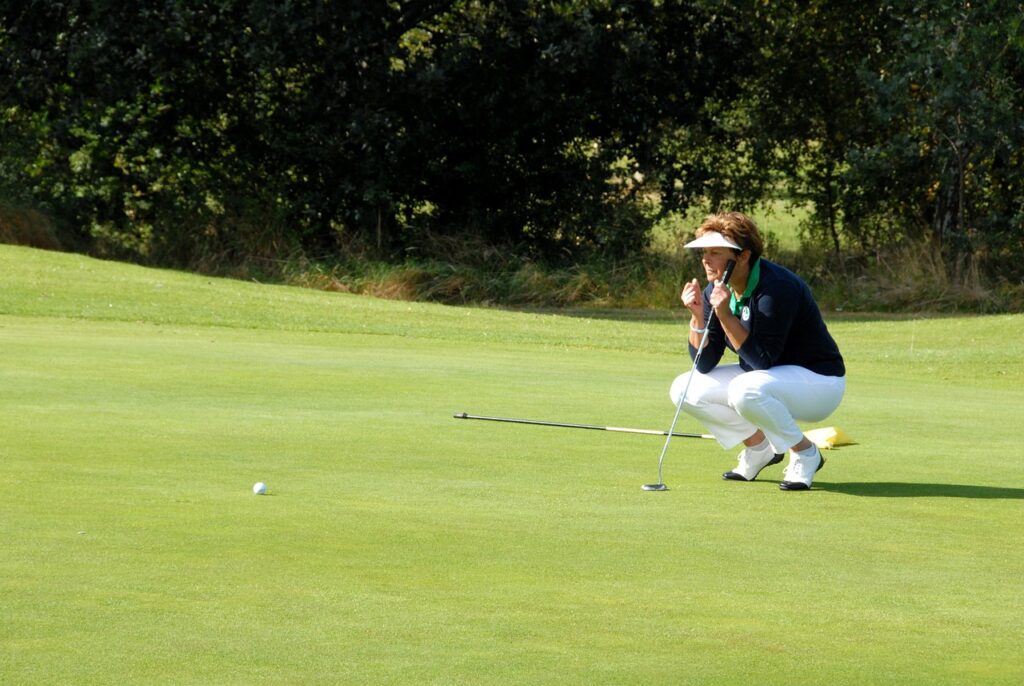
Wrapping It Up
Mental toughness is what separates great golfers from the rest. By staying present, visualizing success, managing pressure, embracing failure, and sticking to a pre-shot routine, tour professionals have found ways to perform under intense circumstances. The good news is that these strategies aren’t reserved for the pros—every golfer can work on their mental game and see real improvements.
Start by adopting just one of these techniques, and practice it consistently. You’ll soon see that with a stronger mental game, your performance on the course will reach new heights.
Until next time, stay strong, stay focused, and keep enjoying the game!
Blog
The Most Dramatic Final-Day Finishes in Major Sports Tournaments
Many sports have some nail bitting finishes. Robert Greenfield recaps some major final day finishes in sports history.
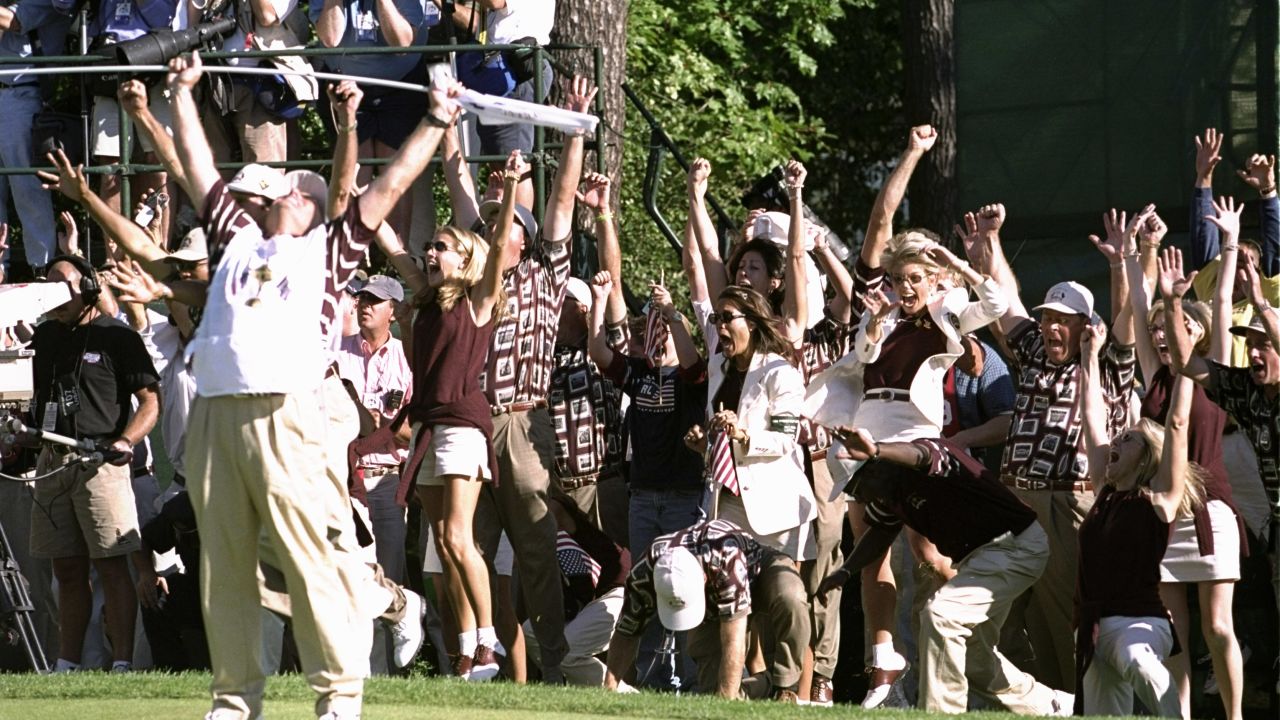
The final day of major sports tournaments often delivers an exhilarating end to the competition that keeps fans on the edge of their seats. There’s no better testament to the suspense and drama of sports than those last-minute turnarounds, nail-biting finishes, and underdog triumphs that define the beauty of competition. This article will take you on a thrilling journey through some of the most dramatic final-day finishes in major sports tournaments, reminding us all why we love sports in the first place.
-
- The Miracle of Istanbul – 2005 UEFA Champions League Final
The 2005 UEFA Champions League Final between Liverpool and AC Milan is etched in the annals of football history as one of the most dramatic comebacks ever witnessed. AC Milan, boasting a star-studded lineup, went into halftime with a seemingly unassailable 3-0 lead. However, Liverpool had other plans. In a six-minute spell after halftime, the Reds staged an incredible comeback to level the match at 3-3, eventually winning the game on penalties. The victory was a testament to the never-say-die spirit of Liverpool and the unpredictability of football.
-
- The “Shot Heard ‘Round the World” – 1951 National League Pennant Playoff
In baseball’s history, few moments match the drama of the 1951 National League Pennant Playoff. The New York Giants and the Brooklyn Dodgers were facing off in a three-game playoff to determine the National League champion. In the bottom of the ninth inning of the decisive third game, with the Giants trailing 4-2, Bobby Thomson hit a game-winning three-run homer off Dodgers pitcher Ralph Branca. This legendary moment, known as the “Shot Heard ‘Round the World,” is one of the most iconic in baseball history.
-
- The 1999 Ryder Cup “Battle of Brookline”
The 33rd Ryder Cup, held at The Country Club in Brookline, Massachusetts, saw one of the greatest comebacks in the history of golf. The United States trailed Europe 10-6 heading into the final day, but in a stunning display of determination and skill, the American team clawed back to win 14.5-13.5. The victory, known as the “Battle of Brookline,” is still celebrated as a pivotal moment in golf history.
-
- The 1980 “Miracle on Ice”
One of the most dramatic moments in the history of ice hockey came during the 1980 Winter Olympics. The heavily favored Soviet Union team was expected to sweep the gold, but the underdog United States team had different plans. In a game filled with tension and drama, the U.S. team defeated the Soviets 4-3 in a match now known as the “Miracle on Ice.” This victory is not only iconic in the sport of ice hockey but also a significant moment in American sports history.
- The 2019 Cricket World Cup Final
The final of the 2019 Cricket World Cup between England and New Zealand was filled with unprecedented drama and suspense. Both teams ended their innings tied on 241 runs, leading to a Super Over – cricket’s version of a tiebreaker. Incredibly, the Super Over also ended in a tie, with both teams scoring 15 runs. England was ultimately declared the winner on the basis of a boundary countback rule, marking their first-ever World Cup victory.
Conclusion
The unpredictability, suspense, and drama are what make sports so captivating. These dramatic final-day finishes remind us of the thrilling highs and lows that come with the world of competitive sports. As fans, we live for these moments, cherishing the unexpected triumphs and heartbreaking defeats. The next time you find yourself watching the final day of a major sports tournament, remember these historic moments and brace yourself for the potential drama that could unfold.
Blog
Weather and the Game: The Undeniable Influence of Elements on Championship Outcomes
Learn how weather affects different championship outcomes.

Introduction
As a sports enthusiast, you might have noticed that weather plays a significant role in sporting events, particularly in championships. From the power of a baseball pitch to the course of a golf ball, from the strength of a football kick to the stride of a marathon runner – the elements can influence each of these and more. In this article, we delve into the fascinating intersection of meteorology and sports, examining how weather conditions can make or break a championship game.
The Impact of Weather on Different Sports
Whether it’s football, baseball, golf, tennis, or marathon, each sport faces unique challenges when it comes to weather. Let’s delve into the specifics:
Football and Weather Elements
Football is a sport that’s played in almost all weather conditions except for severe ones like lightning storms. However, weather elements have a significant impact on the game.
-
- Rain: A wet field makes the ball slippery, impacting players’ ability to handle, pass, or kick the ball accurately. Rain can also make the field muddy, affecting the players’ ability to move swiftly.
- Wind: Strong wind can alter the trajectory of the ball, affecting passes and kicks.
- Cold: Extremely cold temperatures can affect players’ physical performance and endurance, while also making the ball harder and more challenging to catch.
Baseball and Weather Elements
Baseball is another sport where weather conditions can significantly influence the outcome.
-
- Wind: The direction and speed of the wind can affect the trajectory and distance a baseball travels.
- Humidity: High humidity can make the ball denser, potentially reducing its bounce and speed.
- Temperature: Low temperatures can make the ball harder, affecting its bounce and the players’ ability to grip and hit it effectively.
Golf, Tennis, and Marathons
Weather conditions play an equally crucial role in golf, tennis, and marathons.
-
- Wind: In golf, the wind can alter the ball’s direction and distance. In tennis, wind can affect ball control, altering serves and volleys.
- Temperature: Extreme heat can affect a marathon runner’s performance significantly, leading to dehydration and exhaustion.
- Rain: In golf, a wet course can slow down the ball, while in tennis, a wet court can make the ball bounce irregularly.
Case Studies: Weather Influencing Championship Outcomes
This section presents some examples of games where weather conditions significantly influenced the outcome.
- The “Ice Bowl” (1967): The NFL Championship game between the Green Bay Packers and the Dallas Cowboys, often referred to as the “Ice Bowl,” witnessed one of the coldest conditions in NFL history, affecting players’ performance and the final outcome.
- The “Windy City” World Series (1945): The World Series game between the Chicago Cubs and Detroit Tigers was so affected by the wind that it changed the trajectory of the baseball multiple times, influencing the game’s final score.
- Wimbledon Championships (2019): The final match between Novak Djokovic and Roger Federer was played with the Centre Court’s roof closed due to rain, limiting the natural elements’ effects and perhaps altering the match’s dynamics.
Conclusion
The impact of weather on sports is an exciting field of study, revealing how the natural elements influence games and championships. From altering the trajectory of a ball to affecting a player’s physical performance, weather can indeed be a game-changer. As fans and enthusiasts, understanding these influences can add another layer of excitement and anticipation to our favorite sports.
So the next time you attend or watch a game, remember to check the weather forecast. It might just give you a sneak peek into the game’s possible outcome!
Blog
The Unofficial Rules of Golf: A Gentleman’s Guide to Not Being Judge Smails
The official rulebook is thicker than a dictionary and twice as boring. Let’s talk about the rules that really matter on the course: how to have fun, respect the game, and not be a stick-in-the-mud. Hint: It involves less plaid and more cosmic harmony.

You’ve seen him. I’ve seen him. The guy who quotes the USGA rulebook like it’s scripture. He’ll happily tell you your ball moved a quarter of an inch when you addressed it, costing you a penalty stroke. He’s got a plumb bob for a three-foot putt and the personality of a rake. He is, in spirit, Judge Smails. And let’s be honest, nobody wants to be Judge Smails.
The real game of golf, the one that keeps us coming back, isn’t played by those rules. It’s played by a higher law. An unwritten code of conduct that’s all about flow, friendship, and the pursuit of that one perfect shot. It’s a gentleman’s agreement with the universe.
So, let’s talk about the rules that actually matter.
1. The Cosmic Readjustment (aka The Mulligan). Your first tee shot is a mess. It goes sideways into the woods where the gophers play. The Smails of the world would tell you to take a penalty and hack it out. I say the universe is just getting warmed up. The “breakfast ball” isn’t cheating; it’s a course correction. It’s an agreement among friends that a round of golf shouldn’t be ruined before it even begins. Take another. The Dalai Lama would want you to.
2. The Art of Flow (aka Pace of Play). This isn’t about rushing. Rushing is a fool’s game. This is about flow. It’s about being ready to hit when it’s your turn. It’s about watching your friend’s shot so you can help them find it. It’s about moving with a purpose, not like you’re searching for your car keys in a dark parking lot. Don’t be the anchor that drags the whole group down. See the line, hit the ball, walk on. Nanananana.
3. The Circle of Friendship (aka Gimmes). Is the putt inside the leather? Good enough. Pick it up. Life is too short to watch your buddies sweat over an 18-inch putt for a double bogey. A gimme isn’t just a time-saver; it’s a gesture of goodwill. It says, “I trust you, you trust me, and neither of us needs the anxiety of missing this tiny putt.” It’s good for the karma, and even better for the pace of play.
4. The Final Verdict (aka The 19th Hole). The most important rule is this: no matter what happened out there, you shake hands on the 18th green and settle things over a cold drink at the 19th. The guy who shot an 82 and the guy who shot a 102 are equals in the clubhouse. The stories get better, the putts get longer, and the bad shots fade away. This is where the real game is won.
So, forget about the fine print. Focus on the feeling. Be a good playing partner, enjoy the walk, and don’t be a Smails. You’ll find your score starts to take care of itself.
Did this speak to your soul? Pass it along to your foursome to make sure everyone is on the same page. For more deep thoughts from the fairway, be sure to follow us on social media. It’s the right thing to do.
-

 Product Review6 years ago
Product Review6 years agoThe Perfect Practice Putting Mat Review by Jason Tenzer
-

 Blog4 years ago
Blog4 years agoLoophole Rule Offers PGA Tour Pros a Mulligan
-

 Blog4 years ago
Blog4 years ago2021 Buyer’s Guide: The Top 10 Value Golf Balls For Distance & Feel
-

 Blog5 years ago
Blog5 years agoGolf Marriage Counselor
-

 Blog6 years ago
Blog6 years ago9 Biggest Chokes Of The Past Decade
-

 Product Review6 years ago
Product Review6 years agoTHE ADJUSTABLE IRONS: WALKING STICKS GOLF CLUBS
-

 Blog4 years ago
Blog4 years agoWhat Your Golf Clubs Say About You
-

 Equipment6 years ago
Equipment6 years agoOHK Sports Interview by Jason Tenzer






















